
Koncile is elected startup of the year by ADRA. The solution turns procurement documents into actionable data to detect savings, monitor at scale, and improve strategic decisions.
News
Dernière mise à jour :
October 16, 2025
5 minutes
Choosing the right data integration tool is crucial to ensure performance, reliability, and scalability. Talend and Fivetran, two leaders in the sector, offer radically different approaches. This comparison helps you objectively assess their strengths and limitations in order to make an informed choice in 2025.
Are you hesitating between Fivetran and Talend for your data pipelines? This comprehensive comparison dissects their strengths, limitations, use cases and technical models (ELT vs ETL). Make an informed choice based on your needs for automation, governance, and flexibility of data flows.
Choosing a data integration solution is never trivial. Between automation, scalability, governance or personalization, each tool offers a different approach that can have a direct impact on the performance of your data teams and on the reliability of your analyses.
Fivetran and Talend are among the best known players on the market, but are aimed at company profiles and uses that are sometimes very different. While Fivetran seduces by its simplicity of deployment and its no-code approach, Talend focuses on functional richness and the fine control of data pipelines.
Comparing these two solutions therefore means comparing two visions of integration: turnkey on the one hand, customizable on the other. This comparison will help you understand their respective strengths, identify the most suitable use cases, and make an informed choice based on your technical and organizational priorities.
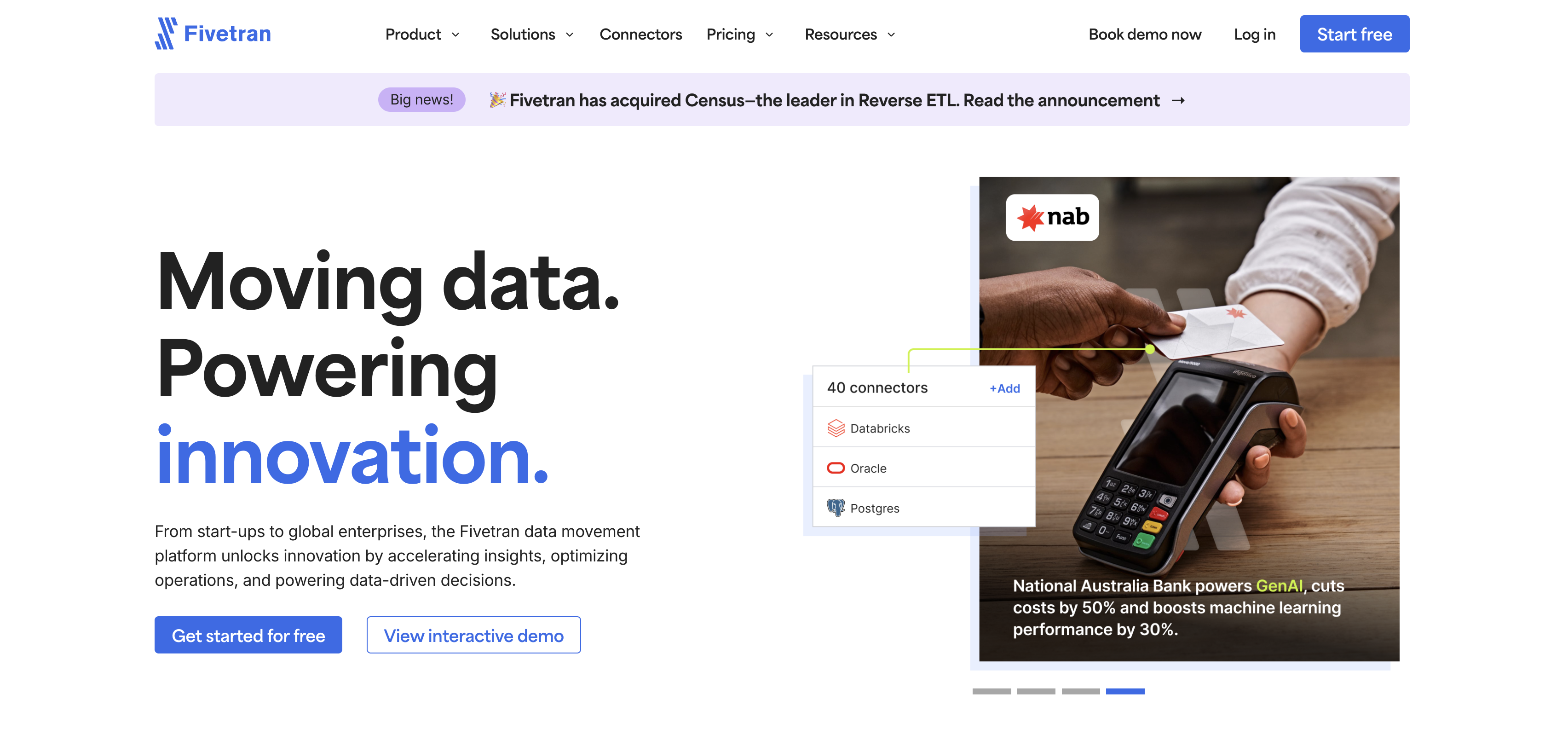
Founded in 2012, Fivetran is a modern data integration tool designed to automate the replication of data between different sources (databases, SaaS applications, APIs...) and cloud destinations such as Snowflake, BigQuery or Redshift.
The solution is based on an architecture ELT (Extract, Load, Transform) which first favors the storage of raw data, with the possibility of transforming them later according to analytical needs.
Unlike traditional ETL tools that require code, Fivetran offers an approach configured via a graphical interface, with the possibility of using dbt Core, dbt Cloud or Coalesce for advanced transformations.
Fivetran's promise is clear: automate the management of data pipelines without having to write complex code. The intuitive user interface, simplified connector configuration, and incremental synchronization features make Fivetran a popular choice for businesses adopting a data-first strategy.
Fivetran is positioned as an automated data integration solution, designed for simplicity, performance and compliance.
Here are its main features:
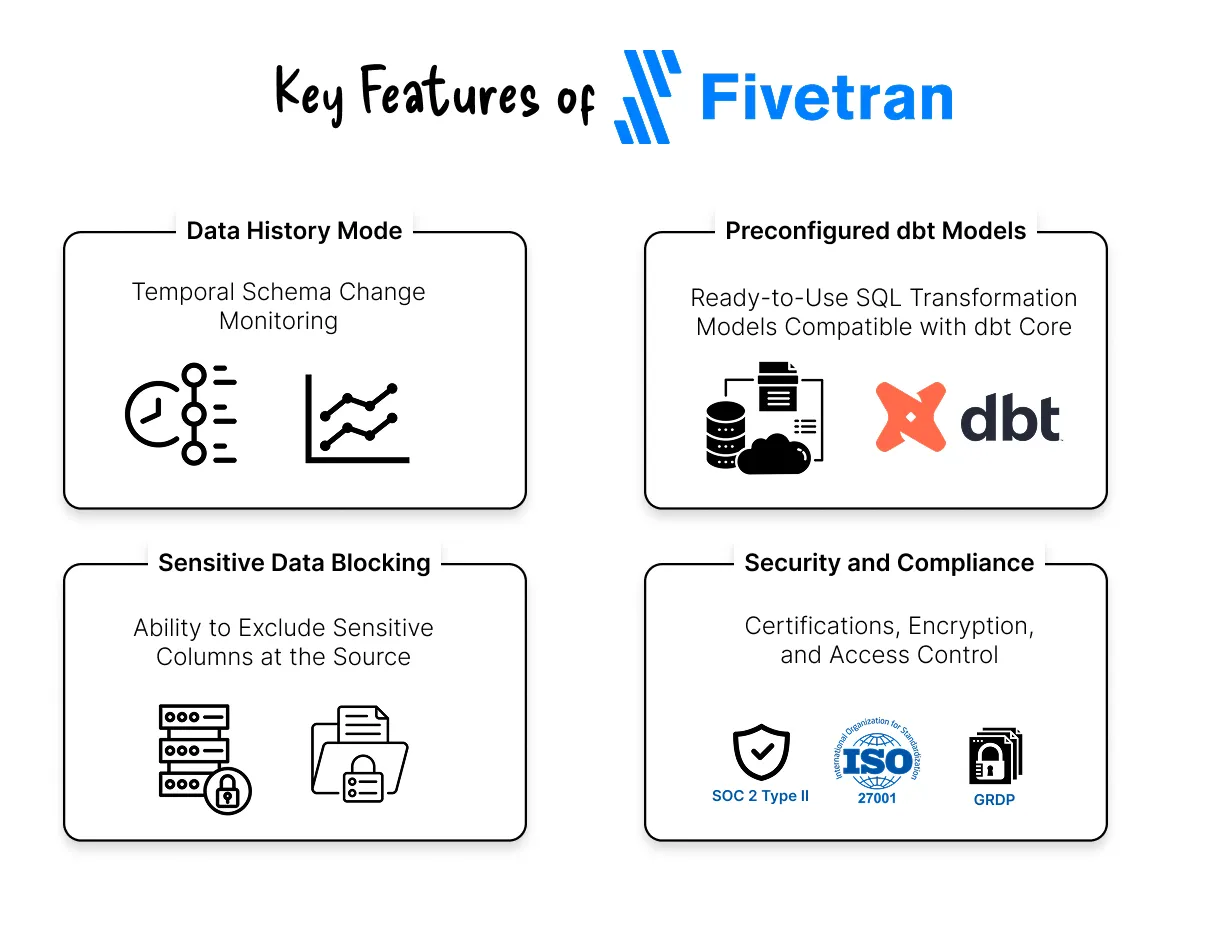
Fivetran is easily integrated into various business environments to automate data flows between source systems and analysis tools.
Data from platforms like Google Ads, Meta, or HubSpot can be automatically centralized to feed marketing dashboards. Teams become more responsive and can adjust their campaigns continuously.
Fivetran makes it possible to connect accounting tools such as QuickBooks, Xero or NetSuite in order to synchronize financial data in real time. This makes it easy to generate reliable and up-to-date reports.
For specific needs not covered by standard connectors, Fivetran offers the creation of custom connectors via cloud functions. This flexibility makes it possible to integrate internal APIs, proprietary formats, or data that requires preprocessing.
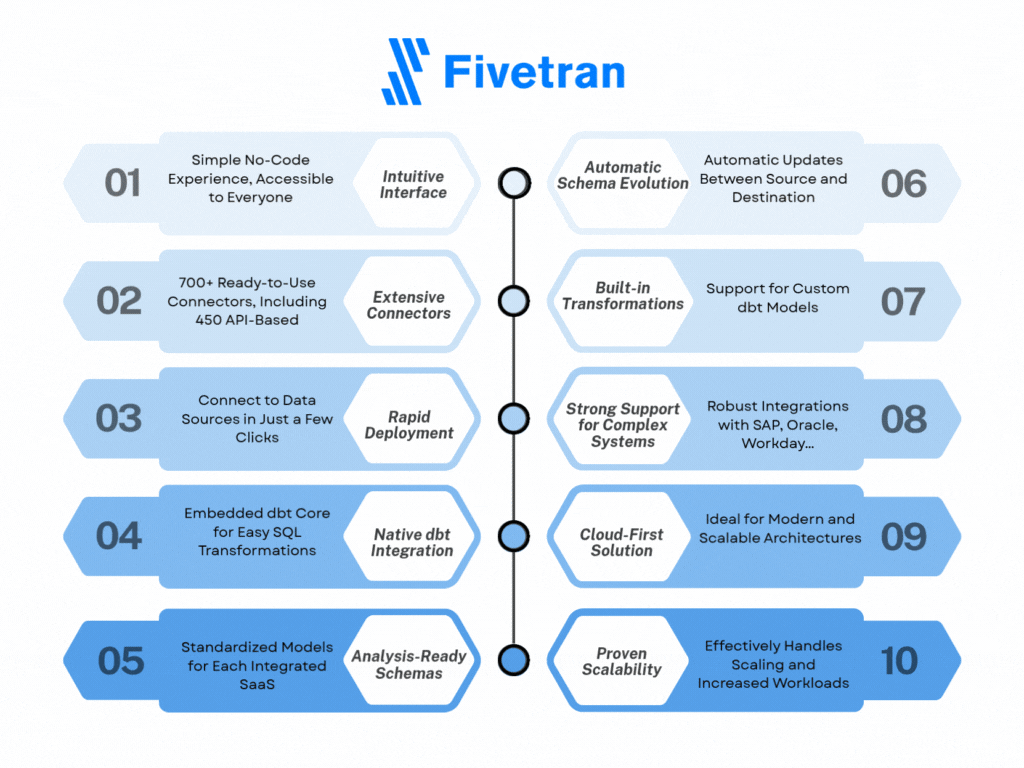
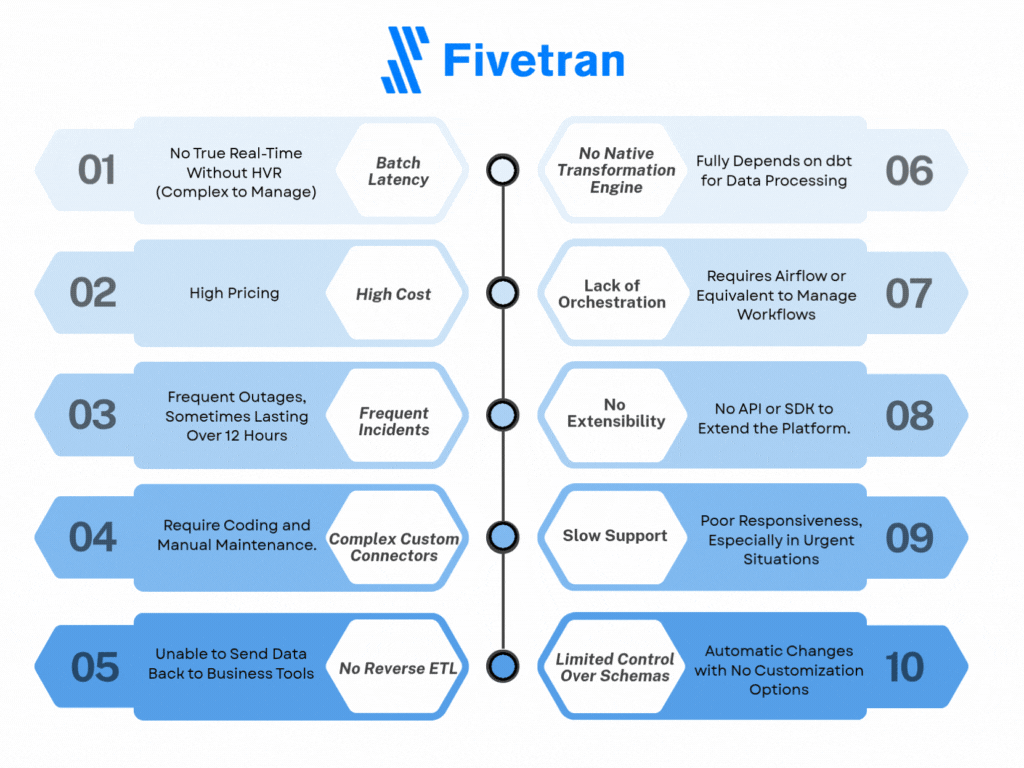
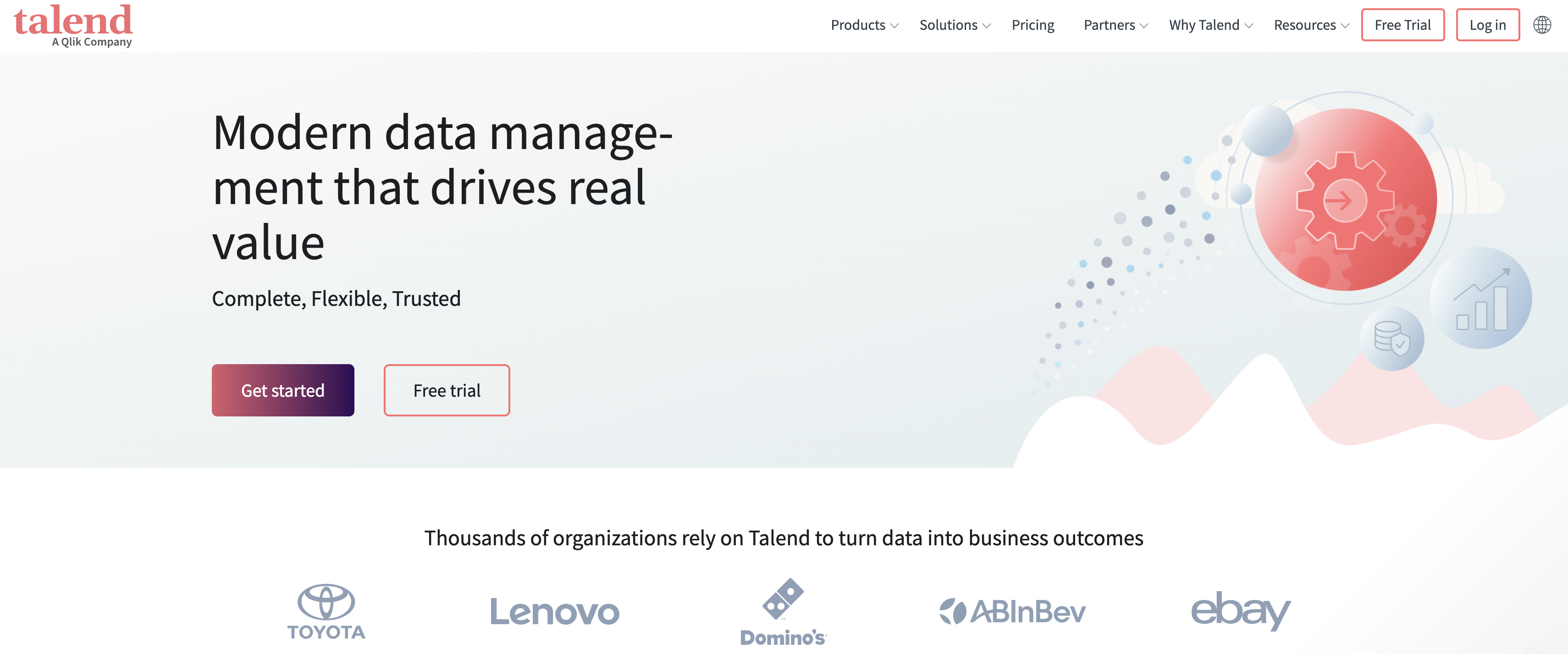
Founded in 2005, Talend is a historical player in data integration, now integrated into the ecosystem Qlik. The platform offers a complete suite of tools to connect, transform, clean, and govern data, both in an environment Cloud WhatOn-premise.
Its flagship solution, Talend Data Fabric, brings together in the same environment the functionalities ofmainstreaming, of data quality And of governance, with an approach Low-code adapted to large-scale data projects. It allows complex workflows to be designed using a graphical interface, while leaving the possibility for technical teams to go further thanks to the Java language.
Unlike ELT solutions like Fivetran, Talend adopts an architecture ETL (Extract, Transform, Load), in which data is transformed before it is loaded into the warehouse, which can provide greater control over processing processes.
Talend has long offered a free open source version (Talend Open Studio), which allowed developers to quickly start integration projects. This version was abandoned in 2024, in favor of the publisher's paid solutions.
Complies with major regulations such as RGPD And the CCPA, Talend is mainly aimed at big companies, with strong requirements in terms of flow management, of security And of data quality control.
Here are its main features:
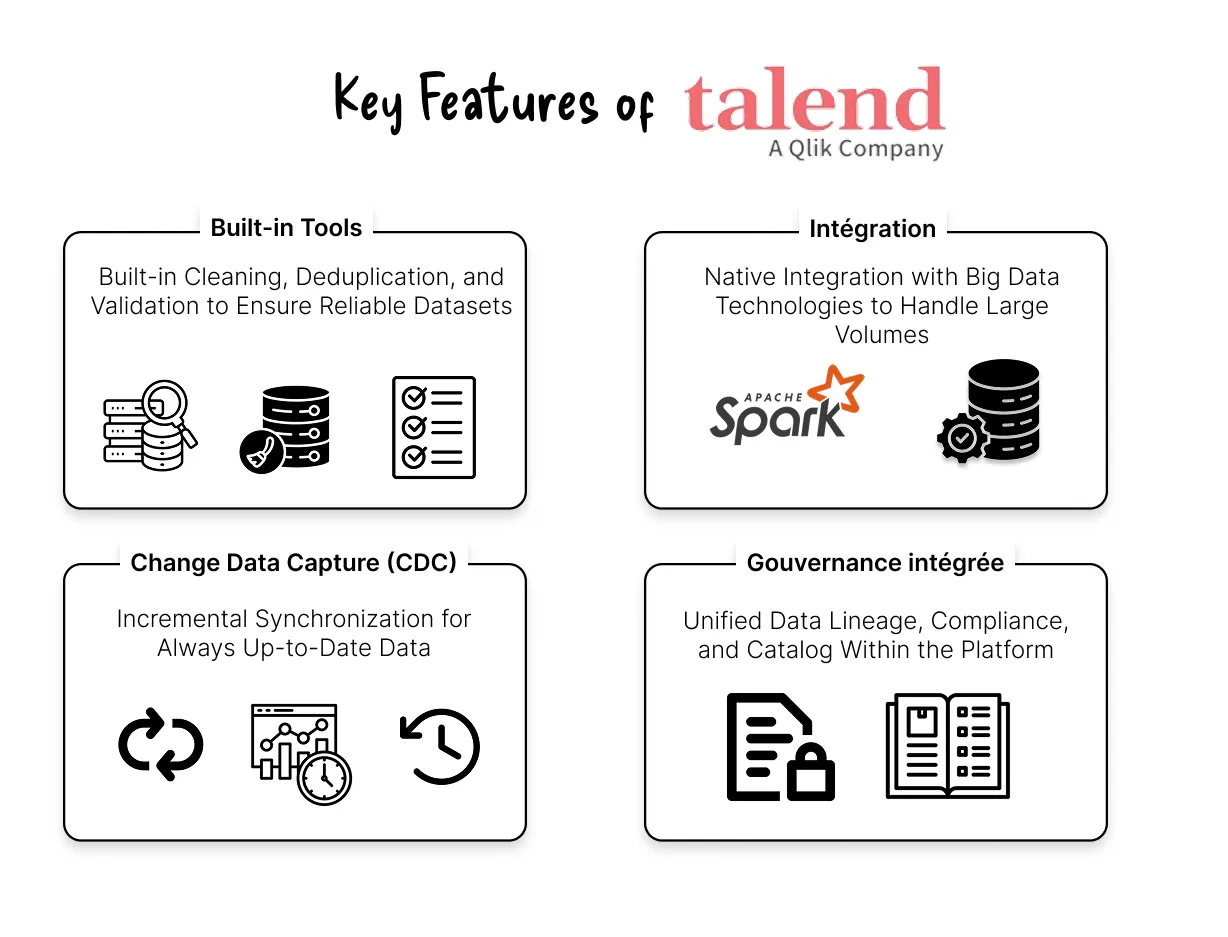
Talend adapts to various business contexts by combining integration, quality and data governance in a unified environment, whether cloud or on-premise.
Talend makes it easy to migrate data to cloud or hybrid environments without compromising data quality. Its flexible deployment makes it possible to modernize the data architecture while ensuring the continuity of operations.
Sectors such as finance or telecommunications use Talend for low-latency data processing. This makes it possible to generate operational dashboards, to monitor customer satisfaction or to detect security anomalies in real time.
With its visual interface and low-code tools, Talend allows non-technical users to create and manage data flows. Business teams can thus exploit data without systematically depending on IT.
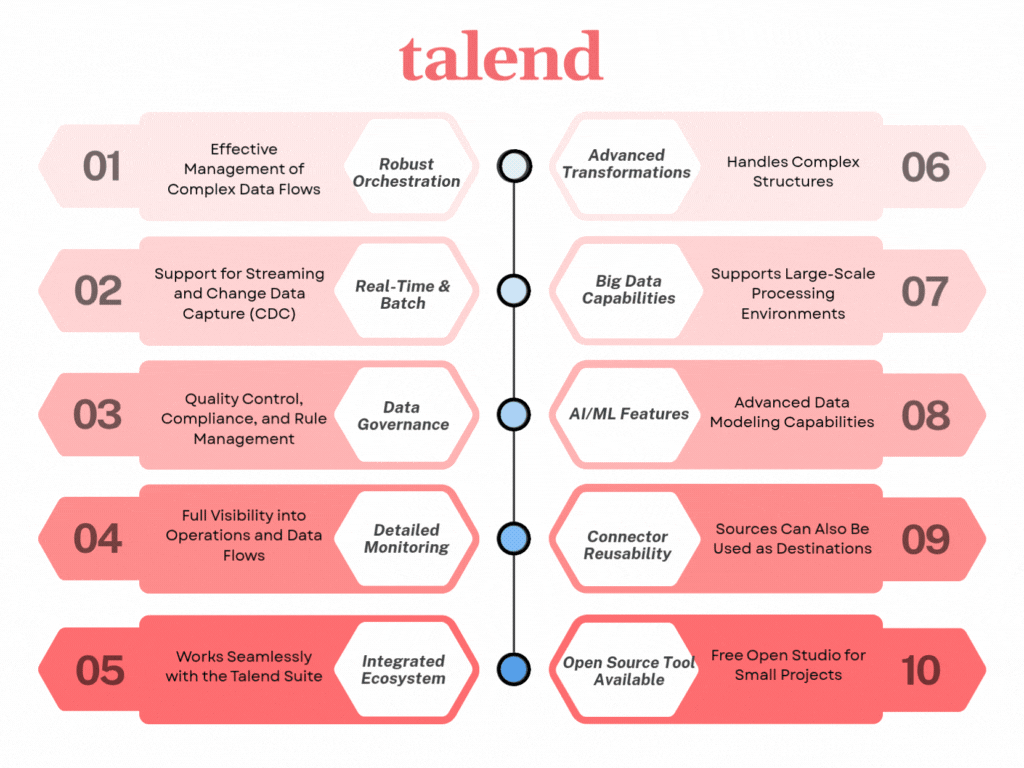
.gif)
Before choosing a solution, it's crucial to understand what each platform actually offers. Features, flexibility, performance, pricing... Here is a detailed comparison between Fivetran and Talend to help you make the right choice according to your business needs.
Fivetran offers more than 700 ready-to-use connectors to databases, SaaS and cloud. For specific needs, custom connectors can be created via cloud functions — but this requires technical skills.
Talend has more than 1,000 connectors and components covering ETL, ELT, iPaaS, and APIs. It also allows you to create connectors and APIs without code via a graphical interface.
Fivetran relies on an approach ELT, with transformations carried out via dbt Core. Users often need to create their own SQL models. The tool remains simple for standard pipelines.
Talend offers an environment Full low-code with integrated transformations, quality management, workflow reusability, and advanced control, more suited to complex use cases.
Fivetran is Cloud-first, easy to set up, with little maintenance. A self-hosted version exists via HVR for businesses with specific needs.
Talend offers a flexible deployment (cloud, on-premise, hybrid) but requires more initial configuration and more technical maintenance.
Fivetran offers frequent batch synchronizations (up to 1 minute), but at a high cost. It is ideal for high-volume analytical cases.
Talend is more suited to needs Real time thanks to modified data capture (CDC), and scalable big data architectures.
Fivetran is certified SOC 1/2/3, PCI-DSS, ISO 27001, with a good level of security.
Talend is distinguished by a advanced governance (SOC 2 Type II, ISO 27701, HIPAA, RGPD), ideal for regulated sectors.
Fivetran charges according to the number of monthly active lines (MAR), which can become unpredictable and expensive on a large scale.
Talend offers a subscription pricing more stable but often higher, with features reserved for premium offers.
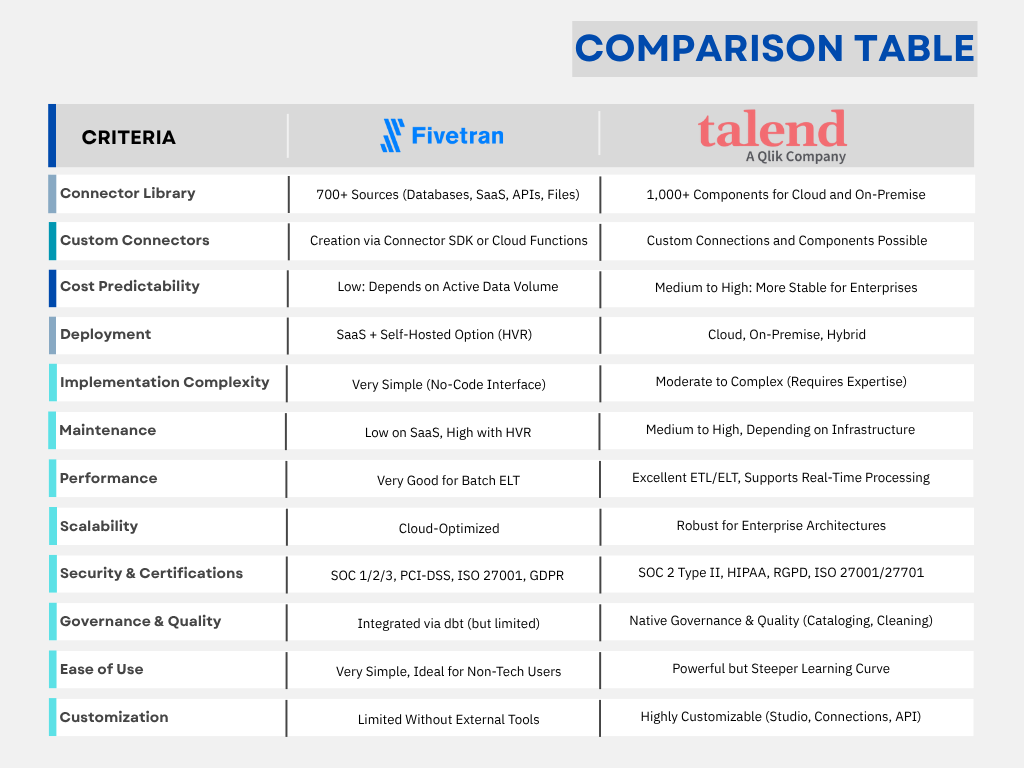
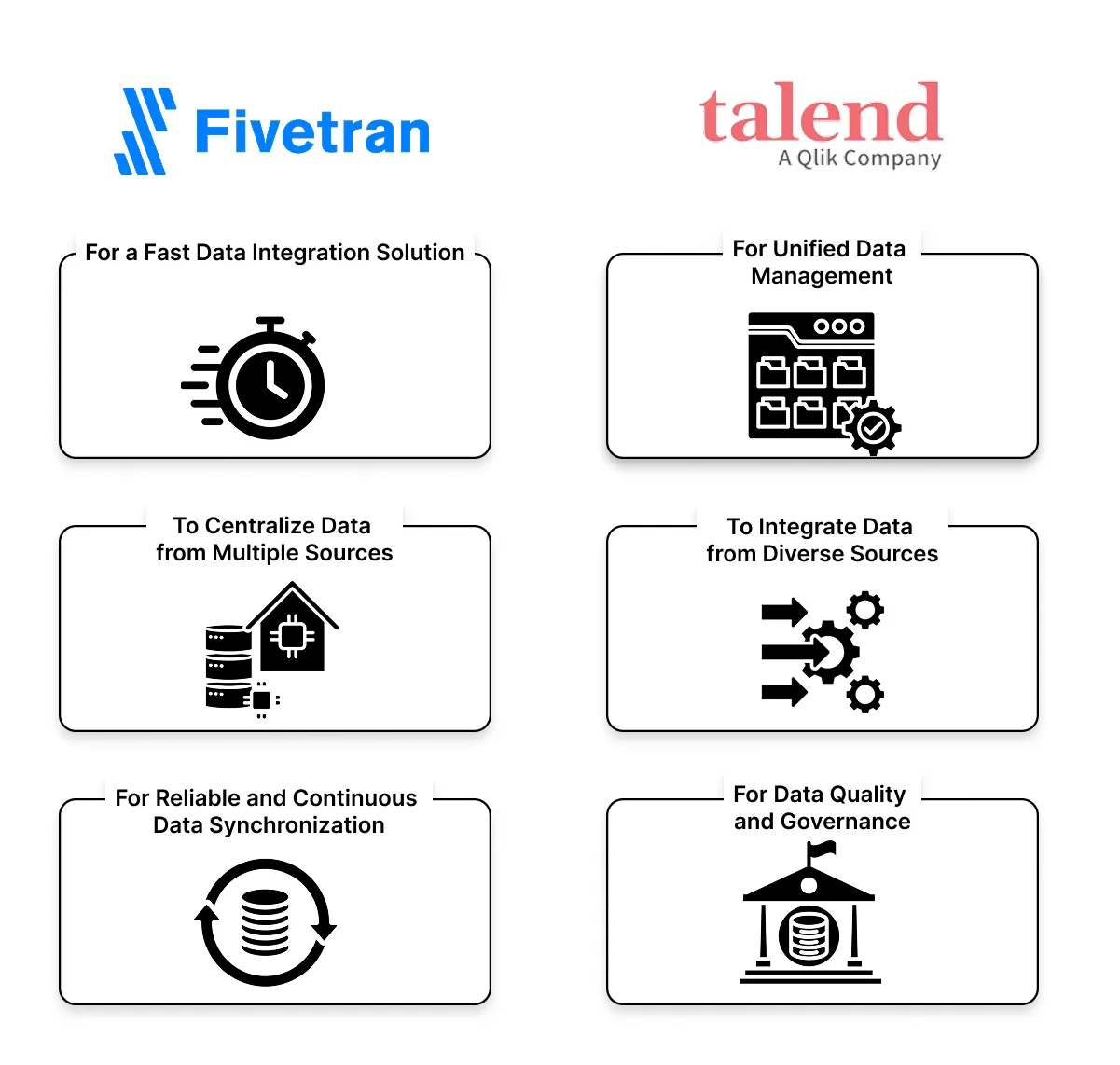
ETL (Extract, Transform, Load) Transform data front to load them into the warehouse. This is the classic approach, often used on-premise.
ELT (Extract, Load, Transform) Load the data Brutes in the data warehouse and then transforms them thereafter, directly in the warehouse via SQL or dbt.
The ELT is more suited to architectures modern clouds (Snowflake, BigQuery), while ETL is better suited for complex or heavily governed cases.
Talend can be used by SMEs, but it is especially designed for organizations with complex needs in governance, data quality and multi-source integration. Its complete platform, now integrated with Qlik, is more aimed at big companies or structured projects with a dedicated data team. For simpler uses or rapid deployment, Fivetran may be a more agile alternative.
Yes. Some businesses use Fivetran to automate data ingestion and then Talend to apply complex business, quality, or governance rules. So both tools can be Complementary depending on the case of use.
Fivetran simplifies the configuration of data pipelines, but advanced transformations require the writing of SQL queries, in particular via Dbt. So it is not a tool entirely no-code for transformation. If you are looking for a platform that integrates a visual transformation engine and configurable business logic, Talend will be more suitable.
Talend is more suitable if you are looking for a solution On-premise or hybrid. Its deployment flexibility allows installation in private cloud environments or in your own infrastructures, with fine governance. Fivetran, on the other hand, is natively Cloud-first and operates mainly in SaaS. An on-premise version exists via Fivetran HVR, but it is aimed at very specific use cases.
Move to document automation
With Koncile, automate your extractions, reduce errors and optimize your productivity in a few clicks thanks to AI OCR.
Resources

Koncile is elected startup of the year by ADRA. The solution turns procurement documents into actionable data to detect savings, monitor at scale, and improve strategic decisions.
News

Why LLM OCR replaces outdated OCR and powers modern document automation.
Comparatives

Three complementary approaches to document fraud detection software, from image forensics to AI-powered consistency checks on financial documents.
Comparatives